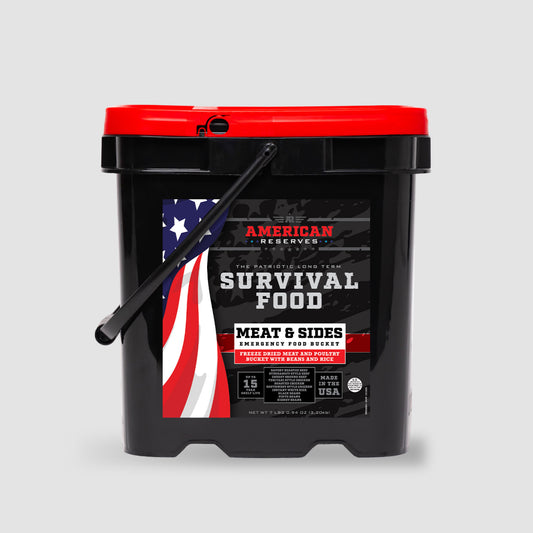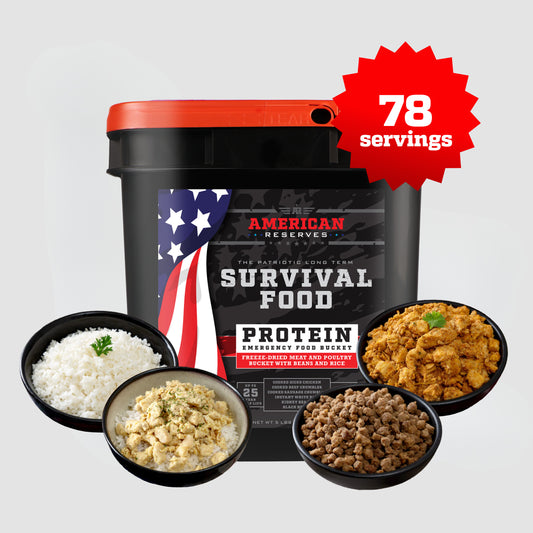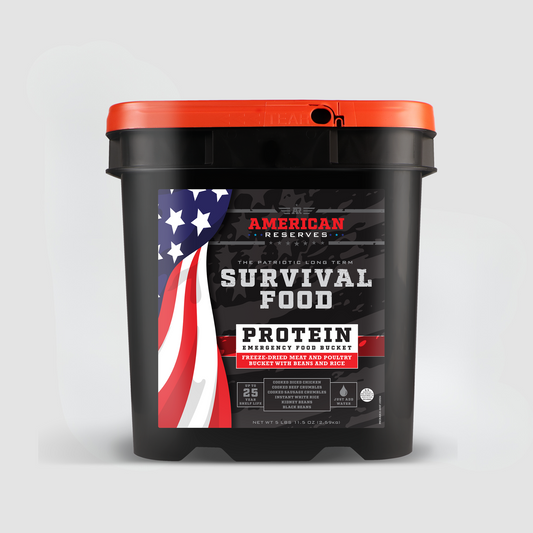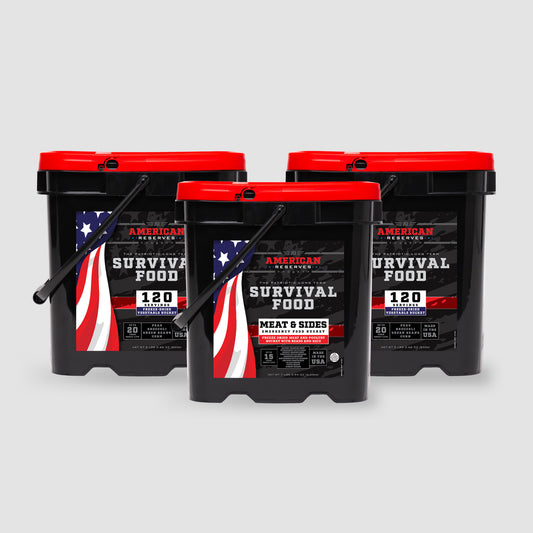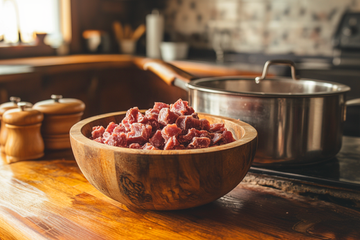
How To Cook Freeze Dried Meat: Step-by-Step
For those who embrace the call of the wild, freeze-dried meat is an indispensable ally, offering lightweight, nutritious sustenance on your adventures. Whether you're trekking through rugged trails or setting up camp under the stars, knowing how to cook freeze-dried meat efficiently can elevate your outdoor culinary experience. This step-by-step guide will equip you with the skills to rehydrate and savor this convenient food source, ensuring that every meal is a delightful reward after a day of exploration.
What Is Freeze-Dried Meat?
Freeze-dried meat is a culinary marvel born from the intersection of science and nutrition, offering a long-lasting, lightweight, and nutrient-rich protein source. The freeze-drying process involves freezing the meat and then reducing the surrounding pressure to remove moisture through sublimation, transforming it into a shelf-stable product without compromising its nutritional integrity. This method preserves the meat's original flavor, texture, and essential nutrients, making it an ideal option for those seeking convenience without sacrificing quality. Whether you're preparing for emergencies, embarking on outdoor adventures, or simply looking for a versatile addition to your pantry, freeze-dried meat provides a reliable and tasty solution that can be effortlessly rehydrated and incorporated into a variety of meals.
Why Should You Learn The Proper Method To Rehydrate and Cook Freeze-Dried Meat?
Learning the proper method to rehydrate and cook freeze-dried meat is essential for maximizing its nutritional value, flavor, and texture, ensuring a satisfying culinary experience. Proper rehydration techniques restore the meat's original tenderness and taste, transforming it from a lightweight, shelf-stable product into a delicious and nutritious component of your meals. Mastering these methods not only enhances your ability to create diverse and appetizing dishes but also empowers you to make the most of your food supplies, whether you're preparing for emergencies, exploring on outdoor adventures, or simply seeking convenient meal solutions. By understanding how to effectively prepare freeze-dried meat, you can confidently incorporate this versatile ingredient into your diet, ensuring that every meal is both enjoyable and nourishing.
How To Cook Freeze Dried Meat: Step-by-Step
Step 1: Gather Your Ingredients and Tools
Before you begin, ensure you have all the necessary ingredients and tools at hand. You'll need your freeze-dried meats of choice, a measuring cup, a bowl for rehydration, hot water, and any additional seasonings or ingredients you wish to incorporate into your dish for rehydrating. Having everything ready will streamline the cooking process and enhance your culinary experience.
Step 2: Measure and Rehydrate the Meat
Start by measuring the desired amount of freeze-dried meat. Typically, one cup of freeze-dried meat will rehydrate to approximately one and a half cups of cooked meat. Place the measured meat into a bowl and pour hot water over it, ensuring the meat is fully submerged. Allow it to soak for about 10 to 15 minutes or until it reaches the desired texture. This step is crucial as it restores the meat's original tenderness and flavor.
Step 3: Drain Excess Water
Once the meat is adequately rehydrated, drain any excess water using a strainer. This step ensures that your dish won't be overly watery and helps maintain the intended consistency and flavor profile. If you're preparing a soup or stew, you might choose to retain some of the rehydration liquid for added flavor.
Step 4: Cook the Rehydrated Meat
With the meats rehydrated and drained, it's time to focus on rehydrating them further for optimal texture and then cook them. You can sauté, grill, or incorporate it into a larger dish, depending on your recipe. If sautéing, heat a pan over medium heat, add a bit of oil, and cook the meat until it's heated through and slightly browned. This step enhances the meat's flavor and texture, making it a delectable addition to your meal.
Step 5: Season and Serve
Finally, season the cooked meat to taste with your preferred spices, herbs, or sauces. This is your opportunity to infuse the dish with your unique culinary flair. Once seasoned, serve the meat as part of a main course, in a salad, or as a topping for pasta or rice. Enjoy the convenience and flavor of freeze-dried meat, knowing you've prepared a nutritious and satisfying meal with ease.
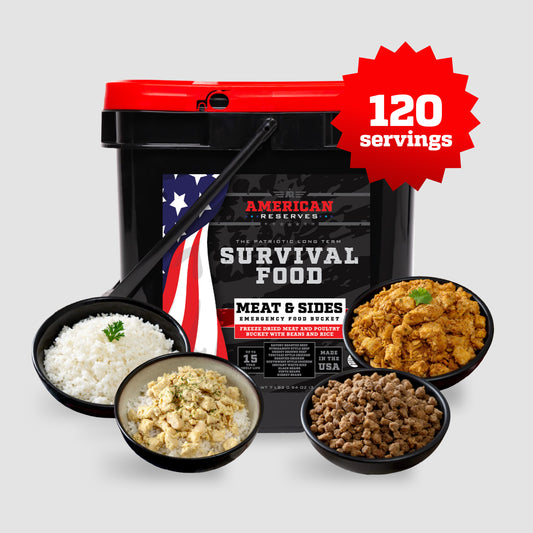
110 Serving Freeze Dried Meat & Sides Bucket
$324.99
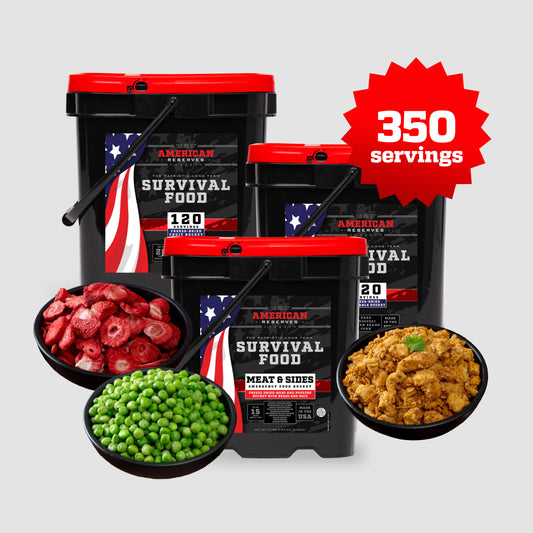
Meat and Produce Bundle
Does Cooking Freeze-Dried Meat Differ From Cooking Fresh or Frozen Meat?
Cooking freeze-dried meat does indeed differ from cooking fresh or frozen meat, primarily due to the initial rehydration step required to restore its moisture content and texture. Unlike fresh or frozen meat, which can be cooked directly, freeze-dried meat must first be soaked in hot water to reconstitute it to its original state. This rehydration process is crucial for achieving the desired tenderness and flavor, as it allows the meat to absorb the necessary moisture it lost during the freeze-drying process, making rehydrating an essential step before cooking. Once rehydrated, the cooking methods—such as sautéing, grilling, or incorporating into recipes—are similar to those used for fresh or frozen meat. However, the key distinction lies in the preparation phase, where understanding the nuances of rehydration can significantly impact the final quality and enjoyment of your dish.
What Are The Best Recipes To Make With Freeze-Dried Meat?
-
Hearty Beef Stew: Combine rehydrated freeze-dried beef with vegetables like carrots, potatoes, and onions in a rich broth. Simmer until all ingredients meld together, creating a comforting and nourishing stew perfect for cold days or outdoor adventures.
-
Chicken Alfredo Pasta: Use rehydrated freeze-dried chicken as the protein base for a creamy Alfredo sauce. Toss it with your favorite pasta and a sprinkle of Parmesan cheese for a quick and satisfying meal that brings gourmet flavors to your table with minimal effort.
-
Taco Filling: Rehydrate freeze-dried ground beef or chicken and season with taco spices. Use it as a filling for tacos, burritos, or enchiladas, and top with fresh ingredients like lettuce, tomatoes, and cheese for a vibrant and delicious meal that’s sure to please.
-
Stir-Fried Rice: Incorporate rehydrated freeze-dried pork or chicken into a stir-fry with rice, vegetables, and soy sauce. This dish is a versatile and quick option, allowing you to customize with your favorite veggies and seasonings for a flavorful, balanced meal.
-
Savory Breakfast Scramble: Mix rehydrated freeze-dried sausage or bacon with eggs, cheese, and vegetables for a hearty breakfast scramble. This protein-packed dish is perfect for starting your day with energy, whether at home or on a camping trip.
What Are The Signs That Freeze-Dried Meat Wasn’t Rehydrated or Cooked Properly?
If freeze-dried meat wasn't rehydrated or cooked properly, several telltale signs may indicate the oversight. Firstly, the texture of the meat may remain tough or chewy, lacking the tenderness expected from well-prepared meat. This often results from insufficient soaking time or inadequate water temperature during rehydration. Additionally, the flavor might be bland or inconsistent, as improper rehydration can prevent the meat from fully absorbing the moisture and seasonings. Visually, the meat might appear dry or unevenly hydrated, with some parts looking more reconstituted than others. These indicators not only affect the palatability of the dish but also suggest that the nutritional benefits of the meat may not be fully realized, underscoring the importance of mastering the rehydration and cooking process for optimal results.
Storage and Leftovers Tips
-
Proper Storage of Unused Freeze-Dried Meat: To maintain the longevity and quality of your freeze-dried meat, store any unused portions in airtight containers or vacuum-sealed bags. Keep them in a cool, dry place away from direct sunlight to prevent moisture absorption and preserve their shelf life, ensuring they remain ready for future use.
-
Refrigerating Leftovers: If you have cooked more freeze-dried meat than needed, store the leftovers in an airtight container and refrigerate them promptly. This helps retain the meat's flavor and texture while preventing bacterial growth. Consume refrigerated leftovers within 3 to 4 days to ensure freshness and safety.
-
Freezing Cooked Leftovers: For longer-term storage, consider freezing cooked freeze-dried meat leftovers. Place them in freezer-safe containers or bags, removing as much air as possible to prevent freezer burn. Label with the date and contents, and aim to use them within 2 to 3 months for optimal taste and quality. When ready to eat, thaw in the refrigerator and reheat thoroughly before serving.
Conclusion
In conclusion, mastering the art of cooking freeze-dried meat opens up a world of culinary possibilities, offering a convenient and nutritious solution for a variety of lifestyles and needs. Whether you're a prepper ensuring your emergency supplies are both practical and palatable, an outdoor enthusiast seeking lightweight meal options, or a busy family looking for quick and healthy dinner ideas, understanding how to properly rehydrate and cook freeze-dried meat is invaluable. By following the steps outlined in this guide, you can confidently transform this versatile ingredient into delicious meals that satisfy both your taste buds and nutritional requirements. Embrace the convenience and reliability of freeze-dried meat, knowing that with the right techniques, you can enjoy flavorful and nourishing dishes anytime, anywhere.
Final Thoughts
What steps have you taken to ensure your family is prepared for unexpected emergencies? American Reserves provides top-notch emergency food supply kits made from high-quality, USA-sourced ingredients. These kits are thoughtfully tailored to deliver the vital nutrition necessary during a crisis. With American Reserves, you secure both nourishment and the assurance needed to navigate any survival scenario with ease and confidence.
Sources
1. https://en.wikipedia.org/wiki/Freeze_drying
2. https://www.bbqguys.com/a/39995/grillabilities/basic/fresh-vs-frozen-meat
3. https://www.sciencedirect.com/science/article/abs/pii/S0924224423003825
